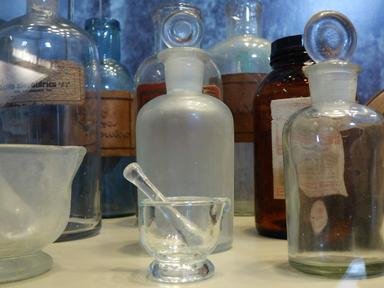Quiz Answer Key and Fun Facts
1. One of four elements named for a Swedish village. Used in lasers.
2. Named from a mythical Greek group. Used in aircraft.
3. Greek name means colour. Used for stainless steel.
4. Known from the Bronze Age. Used to coat other metals.
5. Rare precious metal with low reactivity. Used in jewellery.
6. The lightest alkali metal. Used in batteries.
7. Discovered by Marie Curie. Radioactive metal.
8. Named for a village in Scotland. Used in fireworks.
9. Toxic metal known at least 1500 BC. Was used in dentistry.
10. Needed for human health. Used in steelmaking.
Source: Author
rossian
This quiz was reviewed by FunTrivia editor
WesleyCrusher before going online.
Any errors found in FunTrivia content are routinely corrected through our feedback system.
